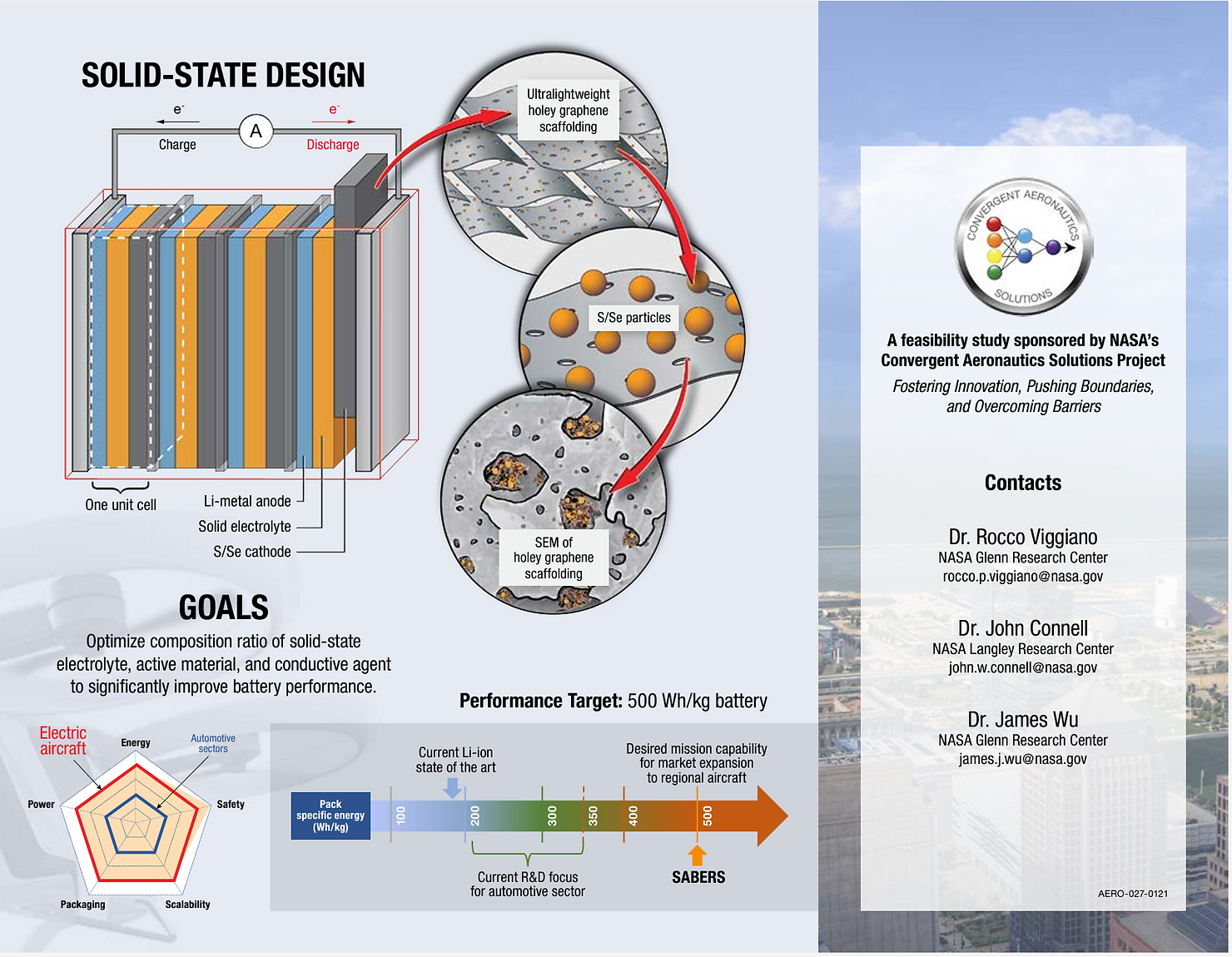In a groundbreaking development, NASA has unveiled a new solid-state sulfur selenium battery to revolutionize the aviation industry by replacing traditional gas-powered engines with electricity.
This innovative technology not only promises to significantly reduce harmful emissions but also opens up possibilities for faster and more efficient electric airplanes. In this article, we explore the implications of this breakthrough, its potential to transform air travel, and the challenges that lie ahead.
Air travel is a major contributor to greenhouse gas emissions and environmental pollution. According to the Environmental Protection Agency (EPA), commercial air travel in the United States alone accounts for 10% of transportation emissions and 3% of the nation’s total greenhouse gas emissions.
Conventional jet engines rely on fossil fuels, releasing a wide array of pollutants into the atmosphere during flight. The urgent need to reduce the aviation industry’s environmental footprint has driven researchers and engineers to seek alternative propulsion methods.

Electric airplanes offer a promising solution to mitigate the environmental impact of aviation. Unlike their fossil-fueled counterparts, electric planes produce zero emissions during flight, making them a cleaner and more sustainable option. However, the adoption of electric aircraft has been hindered by several challenges, including limitations in battery technology.
Electric airplanes require powerful batteries to generate the energy needed for takeoff and sustained flight. To achieve this, a battery must have a high energy density, meaning it can store a significant amount of energy per unit of weight.
Traditional lithium-ion batteries, commonly used in electric vehicles and consumer electronics, have a respectable power-to-weight ratio but fall short when it comes to meeting the demands of larger aircraft.
Related Stories
To put it in perspective, a battery for an electric plane would need an energy density of approximately 800 watt-hours per kilogram (about 363 watt-hours per pound) to make flight feasible.
Historically, the best lithium-ion batteries could only achieve an energy density of around 250 watt-hours per kilogram (about 113 watt-hours per pound), leaving a substantial gap in performance.
Another significant challenge associated with lithium-ion batteries is safety. These batteries contain flammable materials, posing a potential risk to aircraft in the event of a malfunction or fire. Ensuring the safety of passengers and crew is paramount in aviation, making the search for safer battery alternatives a top priority.

In response to these challenges, NASA has been diligently working on its Solid-state Architecture Batteries for Enhanced Rechargability and Safety (SABERS) project. The aim is to develop a battery technology that not only provides the required energy density for aviation but also enhances safety.
The sulfur selenium battery prototype developed by NASA’s SABERS project represents a significant step forward. This solid-state battery maintains its structural integrity even when damaged, eliminating the risk of fire, which is a critical safety feature for aircraft.
Moreover, the prototype boasts an impressive energy density of 500 watt-hours per kilogram (about 227 watt-hours per pound), effectively doubling the energy density of traditional lithium-ion batteries.

One of the key challenges in aviation is the rapid discharge of energy required for takeoff. NASA’s sulfur selenium battery excels in this regard, discharging energy ten times faster than other solid-state batteries.
While this rapid release of energy can lead to increased temperatures, the researchers found that the sulfur selenium battery could withstand temperatures twice as hot as those tolerated by lithium-ion batteries.
In addition to its safety and energy density improvements, NASA’s research team managed to reduce the weight of their batteries by an impressive 40%. Lighter batteries can lead to more efficient aircraft, as they allow for increased fuel capacity. This, in turn, can extend the range and capabilities of electric airplanes, making them more competitive with their traditional counterparts.
While NASA’s sulfur selenium battery represents a remarkable breakthrough in battery technology, it will be some time before we see these batteries powering commercial airplanes.
The production of solid-state batteries remains costly, and any new aviation component must undergo rigorous testing and meet stringent safety standards before receiving approval for use in commercial flights.
By addressing the challenges of energy density and safety associated with traditional lithium-ion batteries, this innovative technology could pave the way for cleaner, more efficient, and environmentally friendly aviation.
While there are still obstacles to overcome, the possibilities presented by this battery technology are nothing short of incredible, offering hope for a more sustainable future in air travel.
Note: Materials provided above by The Brighter Side of News. Content may be edited for style and length.
Like these kind of feel good stories? Get The Brighter Side of News’ newsletter.
The post Groundbreaking NASA battery will revolutionize air travel appeared first on The Brighter Side of News.